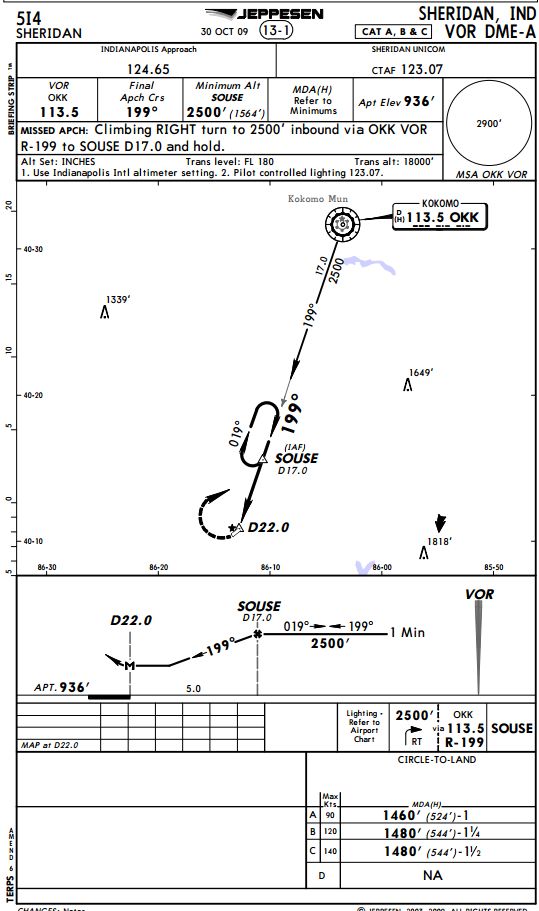Keith,
Great point! I still think it's odd that the airport is not in the MSA. Even the AIM suggests that the airport surface should be included. At least that's how I read it. To your point, even when maneuvering from MAP for the missed procedure, you would be below MSA. Therefore the MSA is irrelevant at that point in the procedure.
c. Minimum Safe/Sector Altitudes (MSA) are published for emergency use on IAP charts. For conventional navigation systems, the MSA is normally based on the primary omnidirectional facility on which the IAP is predicated. The MSA depiction on the approach chart contains the facility identifier of the NAVAID used to determine the MSA altitudes. For RNAV approaches, the MSA is based on the runway waypoint (RWY WP) for straight-in approaches, or the airport waypoint (APT WP) for circling approaches. For GPS approaches, the MSA center will be the missed approach waypoint (MAWP). MSAs are expressed in feet above mean sea level and normally have a 25 NM radius; however, this radius may be expanded to 30 NM if necessary to encompass the airport landing surfaces. Ideally, a single sector altitude is established and depicted on the plan view of approach charts; however, when necessary to obtain relief from obstructions, the area may be further sectored and as many as four MSAs established. When established, sectors may be no less than 90° in spread. MSAs provide 1,000 feet clearance over all obstructions but do not necessarily assure acceptable navigation signal coverage.
Odd requirement on an approach
Re: Odd requirement on an approach
Rob G.
Private Pilot
Instrument Airplane; ASEL
Private Pilot
Instrument Airplane; ASEL
-
Peter Grey
- Posts: 5716
- Joined: Tue Oct 12, 2010 3:21 pm
Re: Odd requirement on an approach
This is a weird one. Simply put it is a mistake as best as I can tell. There is no reason for OKK to not be an IAF and have a noPT note. However as noted you still must do the HILPT unless cleared by ATC for the straight in (AIM 5-4-9 is the reference on this).
Regarding doing the hold "entry" by simply flying inbound on the course that doesn't quite work. To be technical the AIM states the following must be done for a direct entry (AIM 5-3-8). "When approaching the holding fix from anywhere in sector (c), the direct entry procedure would be to fly directly to the fix and turn to follow the holding pattern."
Regarding the MSA question, this is also a mistake. Technically the airport is covered by the MSA as there is a 4 mile buffer (it's really 29 miles, not 25) (reference is in the TERPS), however the MSA can be officially extended by up the 5 miles if needed to cover the airport, that should have been done in this case.
Hopefully this clarifies some of what is going on here.
Regarding doing the hold "entry" by simply flying inbound on the course that doesn't quite work. To be technical the AIM states the following must be done for a direct entry (AIM 5-3-8). "When approaching the holding fix from anywhere in sector (c), the direct entry procedure would be to fly directly to the fix and turn to follow the holding pattern."
Regarding the MSA question, this is also a mistake. Technically the airport is covered by the MSA as there is a 4 mile buffer (it's really 29 miles, not 25) (reference is in the TERPS), however the MSA can be officially extended by up the 5 miles if needed to cover the airport, that should have been done in this case.
Hopefully this clarifies some of what is going on here.
-
Keith Smith
- Posts: 9943
- Joined: Sat Oct 09, 2010 8:38 pm
- Location: Pompton Plains, NJ
- Contact:
Re: Odd requirement on an approach
anyone got a jepp version of the plate?
-
Keith Smith
- Posts: 9943
- Joined: Sat Oct 09, 2010 8:38 pm
- Location: Pompton Plains, NJ
- Contact:
Re: Odd requirement on an approach
I know someone who has access to the raw data behind these approaches, I will ask if he can check it.
